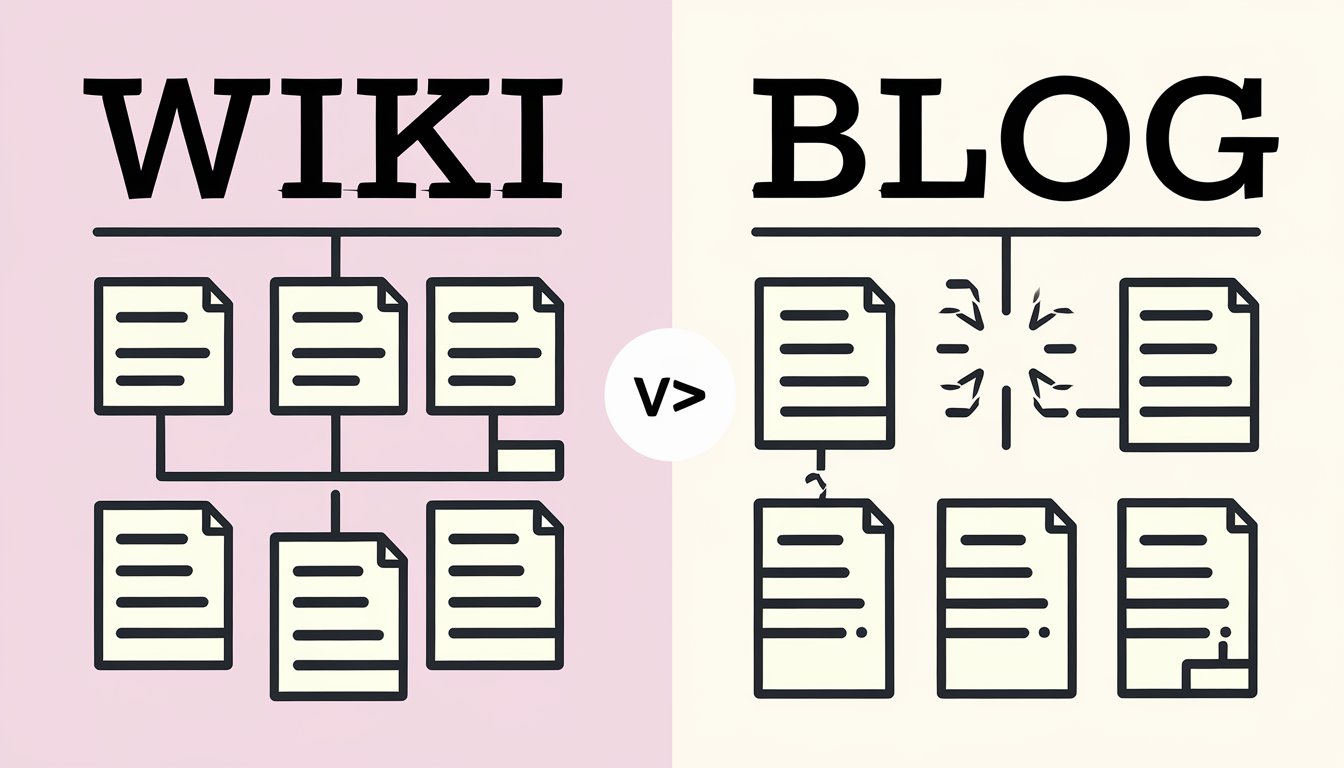How To Structure a Blog Post: A Step-by-Step Guide
Writing a well-structured blog post is key for freelance writers. It’s not just about writing words; it’s about making content that grabs readers’ attention. A good structure makes your writing faster and more efficient.
Let’s look at the basics of blog post structure and content creation. We’ll see how good organization improves readability and SEO. It also shows off your writing skills. With these tips, you’ll make blog posts that engage your audience.
Are you ready to improve your blogging? Let’s go through the steps to create a standout blog post in the digital world.
The Importance of Blog Post Structure
With over 600 million blogs online, standing out requires more than great ideas; it requires great structure. A well-structured blog post keeps readers engaged and helps your content rank higher in search engine results.
Why Structure Matters:
- Improved Readability: Clear headings and short paragraphs make your content easier to scan, keeping readers on your page longer.
- Boosted SEO: Search engines reward well-organized content by featuring it in snippets and “People Also Ask” sections.
- Better Engagement: Breaking content into digestible sections increases shares and comments.
To succeed, focus on concise, organized sections that deliver your message effectively.

The 9 Essential Steps to Structuring a Blog Post
Now that you understand the importance of blog post structure, let’s dive into the actionable steps you can follow to create content that captures attention and drives results. These steps will help you stay focused and organized, ensuring your posts are both engaging and effective.
Step 1: Know Your Audience
Knowing who you’re writing for is crucial. Start by picking 2-3 main topics for your blog. This focus attracts readers who share your interests. Create reader personas to better understand your audience. Think about their age, interests, and challenges.
Google Analytics gives insights into your audience’s demographics and interests. Use this data to improve your content strategy. Do keyword research to find topics your audience is searching for. This way, your blog meets their needs and concerns.
Also, check out forums and communities in your niche. They show what your audience is missing. By knowing your audience, you can choose the perfect niche for your blog and boost your success.
Most marketers write for several audiences, three being the best number. Tailoring your content to specific personas helps engage your audience and keeps them coming back for more.
Step 2: Define Your Blog Post Goal
Before you start writing, define what you aim to achieve. Do you want to educate, solve a problem, or promote something? Your goal will guide your post’s direction.
Your objectives should match your audience’s needs and interests. This focus leads to targeted and effective content. For instance, if your readers frequently ask about a topic, aim to create a detailed guide on it.
Remember, your blog post goal affects every part of your writing. It influences your research, tone, and the information you share. By setting clear objectives, you’re more likely to create a post that connects with your readers and meets your goals.
Step 3: Craft a Compelling Title
Your blog title is the first thing readers see. It’s your chance to grab their attention and make them click. Studies show that 60% of readers don’t go past the headline. So, it’s key to make it count.
Keep your blog titles under 60 characters for the best impact. This length ensures your title shows up fully in search results. Aim for 8 to 12 words to make it shareable on Twitter. Facebook users like slightly longer headlines of 12 to 14 words.
Use numbers, especially single digits, to boost engagement. Phrases like “need to know” or “the best” can increase shares. Adding the current year makes your content seem fresh and relevant. For a 38% boost, try ending your title with a bracketed clarification.
Remember to include your target keywords naturally in your headline. This helps with SEO and tells readers what to expect. Use tools like headline analyzers to refine your titles. Test different versions to see which works best. With practice, you’ll get better at crafting compelling blog titles that attract traffic and engage readers.
Step 4: Write an Engaging Introduction
In today’s digital world, creating a compelling blog intro is key. With over 600 million blogs out there, your intro needs to grab attention fast. Studies reveal that people spend only 52 seconds reading a post, making those first words crucial.
To make a strong start, use interesting facts, thought-provoking questions, or personal stories. For instance, Eugene Schwartz, a top copywriter, spent a week perfecting the first 50 words of his sales pieces. This shows how vital a strong opening is.
Your intro should be 100-200 words long and engaging, like excitement or FOMO. Remember, effective blog post introductions set clear expectations and encourage readers to dive deeper. By mastering this, you’ll increase your content’s engagement and impact.
Step 5: Structure the Body Content
Creating engaging blog posts starts with good content organization. Use subheadings to break your main content into sections. This makes your post easy to read and keeps readers interested. Most blog posts have 2-4 subheadings and are 700-850 words long.
Visual content is important for your blog post. Add images, videos, and infographics to make your points clear. Blogs with visuals do better as they engage readers more and receive more shares.
Use bullet points and numbered lists to organize your information. This makes your content easy to scan. For list-style posts, use numbered points in the main body. Well-structured blog posts enhance the reading experience and make your content more valuable.
Step 6: Conclude Effectively
A strong blog conclusion makes a lasting impression. It’s your last chance to summarize key points and encourage action. Start by briefly summarizing the main ideas from your post.
This reminds readers of the value they’ve gained and reinforces your message. Next, connect your content to your readers’ needs. Show how your insights can solve their problems or improve their lives.
This personal touch helps your audience relate to your message on a deeper level. End with a powerful call to action. Encourage readers to share your post, leave a comment, or sign up for your newsletter.
This keeps them engaged and builds a connection beyond the current article. For example, you might say, “Enjoyed these writing tips? Share this post with a fellow blogger who could use a boost!”
Remember, your conclusion is more than just a summary. It’s an opportunity to inspire, motivate, and guide your readers. By crafting a thoughtful ending, you’ll leave your audience satisfied and eager for more of your content.
Step 7: Proofread and Edit
Polishing your blog post is key to quality content. Blog editing means checking for errors and improving your writing. Take short breaks every 30 minutes to stay focused. This can make your proofreading 60% better.
Use proofreading tools to improve your editing. Spell checkers and grammar tools are good, but they’re not perfect. They might miss some errors or suggest wrong changes. So, it’s best to use them with a manual review.
Try reading your post backwards to find errors you might miss. This method helps spot spelling mistakes and awkward phrasing. Circle each punctuation mark to check if you use it correctly. Reading aloud can also show issues with flow and readability.
For a new view, think about professional proofreading services. These experts can find errors you might have missed. Remember, good blog editing is crucial for impactful, error-free content that engages your audience.

Step 8: Optimize for SEO
SEO optimization is crucial for making your blog more visible. On-page SEO techniques can boost your search engine rankings. Use your target keywords in your title, headings, and the first paragraph. This tells search engines what your content is about.
Write compelling meta descriptions to get more clicks from search results. These short summaries give readers a sneak peek of your post. Keep them under 160 characters and include your main keyword.
Don’t overlook image optimization. Use descriptive file names and alt text for your images. This helps search engines understand your visual content. Internal linking is also powerful. It guides readers to related content on your site and helps search engines navigate your site structure.
Quality content is the base of good SEO. Aim for at least 300 words per post, as Google favors longer articles. Use headers and subheadings to break up your text. This makes your content easier for both readers and search engines to read.

Step 9: Promote Your Blog Post
After writing your blog post, it’s time to share it with your audience. Blog promotion and content marketing are crucial for getting your post seen. With over 600 million blogs online, you need a smart plan to stand out.
Begin by posting on social media. Instagram, with over 1 billion users, is a great place to start. Facebook is also key, offering the best return on investment for marketers. Twitter is important, too – even a few tweets a week can help you gain followers, as Brian Dean from Backlinko found.
Email marketing is still effective for promoting your blog. People are more likely to click on an email link than a tweet. Try turning your content into videos, infographics, or presentations to get more engagement. Finally, use keywords and social sharing buttons to help people find your post.
Wrap It Up: Create Blog Posts That Leave a Lasting Impact
A well-structured blog post informs and creates a lasting impression. By focusing on organization, audience alignment, and promotion, you’ll captivate readers and elevate your online presence.
Ready to take your blogging to the next level? Start implementing these steps today and stand out in the crowded digital world.
Looking for more ways to improve your blog? Explore our full library of expert guides and strategies at After Social. Keep growing, learning, and building your blogging success!





